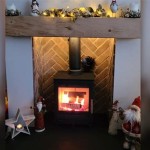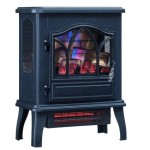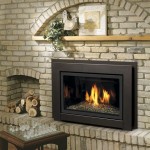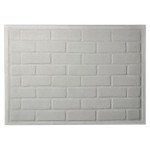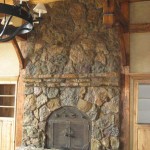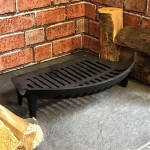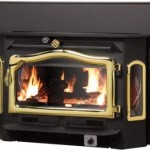US Stove Medium EPA Certified Wood Burning Fireplace Insert: A Comprehensive Overview
The US Stove Company, a long-standing manufacturer of heating solutions, offers a range of wood-burning fireplace inserts designed to provide efficient and effective warmth to homes. Among these, the Medium EPA Certified Wood Burning Fireplace Insert stands out as a popular choice for homeowners seeking a reliable and compliant heating appliance. This article provides a detailed examination of this specific model, exploring its features, benefits, compliance standards, and considerations for potential buyers.
A fireplace insert is essentially a closed combustion system designed to fit inside an existing masonry fireplace opening. By transforming an open fireplace into a more controlled and efficient heat source, these inserts significantly reduce heat loss up the chimney and increase the overall heating efficiency of the wood-burning process. The “Medium” designation typically refers to the size of the firebox and the heating capacity of the insert, making it appropriate for heating moderately sized living spaces.
The EPA certification signifies that the insert meets the strict emission standards set by the United States Environmental Protection Agency. These standards are designed to minimize the release of particulate matter into the atmosphere, making wood-burning appliances cleaner and more environmentally friendly. For homeowners, EPA certification ensures compliance with local regulations and contributes to improved air quality.
Key Features Contributing to Efficiency and Performance
The US Stove Medium EPA Certified Wood Burning Fireplace Insert incorporates several key features that contribute to its overall efficiency and performance. These include a firebox designed for optimal combustion, a blower system for enhanced heat distribution, and durable construction materials for long-lasting reliability.
The firebox is the heart of the insert, and its design is crucial for achieving complete and efficient combustion. Factors such as the size, shape, and internal baffling system influence how effectively the wood burns and how much heat is extracted. The US Stove Medium EPA Certified Wood Burning Fireplace Insert typically features a firebox engineered to maximize heat output while minimizing smoke and particulate matter emissions. The use of refractory bricks or ceramic blankets inside the firebox helps to retain heat and further improve combustion efficiency. Some models incorporate secondary combustion systems, which re-burn the gases produced during the initial combustion process, further reducing emissions and increasing heat output. These systems typically involve introducing preheated air into the upper portion of the firebox.
A blower system is an integral component of most fireplace inserts, as it significantly enhances heat distribution. Without a blower, much of the heat generated by the insert would radiate directly from the front of the unit, leaving other areas of the room cooler. The blower draws cool air from the room, passes it over the heated surfaces of the firebox, and then circulates the warmed air back into the room. This forced-air circulation ensures a more even and consistent temperature throughout the designated heating area. The blower speed is often adjustable, allowing homeowners to control the amount of heat being circulated and to optimize comfort levels. The effectiveness of the blower system is directly related to the size and power of the blower motor, as well as the design of the air channels within the insert.
The durability of a fireplace insert is paramount, given the high temperatures and stresses it must withstand. The US Stove Medium EPA Certified Wood Burning Fireplace Insert is typically constructed from heavy-gauge steel or cast iron, materials known for their strength and resistance to warping or cracking under extreme heat. The door of the insert is usually made of cast iron and features a ceramic glass window that allows homeowners to view the fire. The seams of the firebox are carefully welded to ensure a tight seal, preventing air leaks that could compromise combustion efficiency. The external surfaces of the insert are often finished with a heat-resistant paint or enamel coating to protect against corrosion and maintain a visually appealing appearance.
EPA Certification and Compliance Considerations
The EPA certification is a critical aspect of any wood-burning appliance, ensuring that it meets stringent emission standards and operates in an environmentally responsible manner. Understanding the specific requirements and implications of EPA certification is essential for homeowners considering the US Stove Medium EPA Certified Wood Burning Fireplace Insert.
The EPA establishes emission limits for particulate matter (PM), which is the fine soot and ash released during wood combustion. These limits are designed to reduce the amount of air pollution generated by wood-burning appliances. The EPA certification process involves rigorous testing to ensure that the insert meets these emission standards. The testing is typically conducted by independent laboratories that are accredited by the EPA. During the testing process, the insert is operated under controlled conditions, and the emissions are carefully measured. If the insert meets the EPA's emission limits, it is granted certification.
In addition to meeting the EPA's emission standards, homeowners must also comply with local regulations regarding wood-burning appliances. These regulations may vary depending on the city, county, or state. Some jurisdictions may have restrictions on the type of wood that can be burned, while others may require permits for installing or operating wood-burning appliances. It is important to check with local authorities to ensure compliance with all applicable regulations. Failure to comply with these regulations could result in fines or other penalties. Furthermore, some areas may offer incentives, such as tax credits or rebates, for installing EPA-certified wood-burning appliances, as these appliances contribute to improved air quality.
Maintaining the EPA certification of the insert is also important. This typically involves burning only seasoned firewood, ensuring proper air supply to the firebox, and regularly cleaning the chimney to prevent creosote buildup. Creosote is a flammable substance that can accumulate in the chimney and increase the risk of a chimney fire. Regular chimney cleaning is essential for maintaining the safe and efficient operation of the insert. Additionally, following the manufacturer's recommendations for operating and maintaining the insert will help to ensure that it continues to meet EPA emission standards.
Installation, Maintenance, and Operational Considerations
Proper installation, regular maintenance, and careful operation are crucial for ensuring the safe, efficient, and long-lasting performance of the US Stove Medium EPA Certified Wood Burning Fireplace Insert. Neglecting these aspects can lead to reduced heating efficiency, increased emissions, and potential safety hazards.
Installation of a fireplace insert is not a do-it-yourself project for most homeowners. It requires specialized knowledge and skills to ensure that the insert is properly connected to the chimney, that the firebox is adequately sealed, and that all safety clearances are met. It is highly recommended to hire a qualified and certified installer to perform the installation. A professional installer will be familiar with local building codes and regulations and will ensure that the installation is done correctly and safely. The installation process typically involves preparing the existing fireplace opening, installing a chimney liner, connecting the insert to the chimney liner, and sealing the insert to the fireplace opening. The chimney liner is essential for ensuring proper draft and preventing creosote buildup in the existing chimney.
Regular maintenance is essential for maintaining the performance and safety of the insert. This includes cleaning the firebox, inspecting the door seal, and cleaning the chimney. The firebox should be cleaned regularly to remove ash and debris. The door seal should be inspected to ensure that it is airtight. A damaged or worn door seal can allow air leaks, which can reduce combustion efficiency and increase emissions. The chimney should be cleaned at least once a year, or more frequently if necessary, to remove creosote buildup. Creosote buildup can significantly increase the risk of a chimney fire. It is also important to inspect the chimney for any signs of damage or deterioration. Any damage to the chimney should be repaired promptly to prevent potential safety hazards.
Proper operation of the insert involves using seasoned firewood, maintaining adequate air supply to the firebox, and avoiding overloading the firebox with wood. Seasoned firewood burns more efficiently and produces less smoke than green or unseasoned firewood. Adequate air supply is essential for complete combustion. The air supply controls should be adjusted to provide the appropriate amount of air to the firebox. Overloading the firebox with wood can restrict airflow and lead to incomplete combustion, resulting in increased emissions and reduced heating efficiency. It is also important to avoid burning trash, plastics, or other materials in the insert, as these materials can produce harmful pollutants and damage the insert. Following the manufacturer's recommendations for operating and maintaining the insert will help to ensure its safe, efficient, and long-lasting performance.

Us Stove Medium Epa Certified Wood Burning Fireplace Insert Ca

Us Stove Medium Epa Certified Wood Burning Fireplace Insert Ca

Inserts Wood Us Stove Company 2200i Medium Insert Pedestal W Blower

Medium Flush Wood Arched Nexgen Fyre Made In America Fireplace Xtrordinair

Medium Flush Wood Rectangular Nexgen Fyre Made In America Fireplace Xtrordinair

Medium Flush Wood Nexgen Fyre Arch Steel Fireplace Inserts Made In Usa Lopi Stoves

Premium Wood Fireplace Inserts Made In Usa Lopi Stoves

Wood Inserts Fireplace Xtrordinair Made In America

Fireplace Wood Burning Inserts Nashville Tn Ashbusters

Ashley Hearth S 2000 Sq Ft Heating Area Firewood And Fire Logs Stove In The Wood Stoves Furnaces Department At Com

